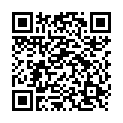|
|
|
| Module code: E202 |
|
4V (4 hours per week) |
|
5 |
| Semester: 2 |
| Mandatory course: yes |
Language of instruction:
German |
Assessment:
Written examination
[updated 10.03.2010]
|
E202 Electrical Engineering, Bachelor, ASPO 01.10.2005
, semester 2, mandatory course
|
60 class hours (= 45 clock hours) over a 15-week period.
The total student study time is 150 hours (equivalent to 5 ECTS credits).
There are therefore 105 hours available for class preparation and follow-up work and exam preparation.
|
Recommended prerequisites (modules):
None.
|
Recommended as prerequisite for:
E404 Electric Power Supply Systems I
E405 Electrical Machines I
E506 Building Services Engineering I
[updated 13.03.2010]
|
Module coordinator:
Prof. Dr. Karl-Heinz Folkerts |
Lecturer:
Prof. Dr. Karl-Heinz Folkerts
[updated 10.03.2010]
|
Learning outcomes:
After completing this course, students will have acquired a basic understanding of the physical quantities, equations and relationships needed to develop solutions to engineering problems. Students will be able to use physical methods to describe technical processes. The knowledge acquired in this course is a fundamental prerequisite for understanding more advanced modules in an engineering degree.
[updated 10.03.2010]
|
Module content:
Introduction to optics: Fundamentals of geometrical optics, wave optics, interference and diffraction, quantum optics, photoelectric effect, de Broglie relation, wave-particle duality
Atomic physics: Fundamentals of the Bohr model of the atom, quantum numbers, lasers, electron spin, nuclear spin and applications
Introduction to relativity theory
[updated 10.03.2010]
|
Teaching methods/Media:
Lecture notes, overhead transparencies, video projector, experimental work
[updated 10.03.2010]
|
Recommended or required reading:
Hering, Martin, Stohrer: Physik für Ingenieure, Springer
Stöcker, H.: Taschenbuch der Physik, Verlag H. Deutsch
[updated 10.03.2010]
|


